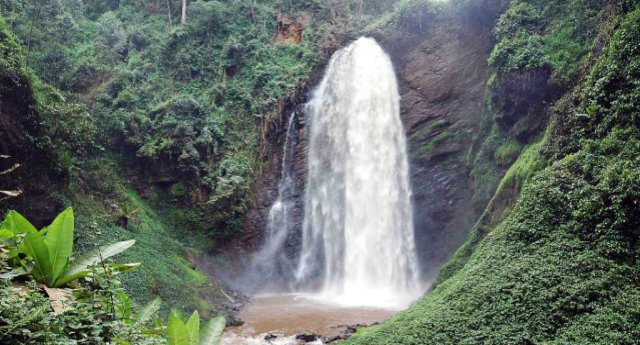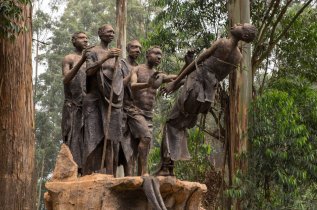
|
Kisiizi Falls Guide |
Kisiizi Falls Guide |
Kisiizi Falls Guide | Kisiizi Falls Guide |
|
|

A similar practice of abandoning pregnant unmarried girls on Akampene Island on Lake Bunyonyi (see above) and Gahiza Island on Lake Mutanda was also widespread as part of a wider plan by the Bakiga to reinforce moral values. A few years ago, two young local artists were commissioned to express what happened at Kisiizi and created the statue, which stands (bottom, left) testament to the lives lost, with the featured characters draped in traditional garments made of bark cloth. 1958 also saw the establishment of Kisiizi Hospital by Dr Ian Sharp, a Scottish missionary doctor. What began as a small clinic quickly grew into a vital healthcare institution, not only offering medical services but also embodying a spirit of healing, compassion, and progress that directly countered the falls' dark past. Today, Kisiizi Falls stands as a powerful emblem of historical reflection, cultural evolution, and sustainable development despite being somewhat off the beaten path as Kisiizi itself is only connected to the major road way via a dirt track ~ but that's part of the beauty of Uganda, wild, natural, uncommercialised and unspoilt. The community and the hospital have worked tirelessly on conservation efforts, recognising the ecological importance of the falls and their surrounding environment. The area is now managed with a focus on preserving its natural integrity, promoting responsible ecotourism, and ensuring that future generations can appreciate both its beauty and its compelling story. Visitors can explore well-maintained trails that lead to various vantage points, offering spectacular views of the cascade and the lush river valley. Guided walks provide insights into the local flora and fauna, including a rich birdlife, and the opportunity to learn more about the Bakiga culture from a contemporary perspective. Furthermore, adventure tourism has begun to flourish around the falls, with activities like a thrilling zip-line traversing the gorge, offering an exhilarating perspective on the landscape. This respectful development of tourism not only provides economic opportunities for the local population but also serves as an educational platform, encouraging visitors to reflect on the complex interplay between nature, history, and human endeavour. The revenue generated contributes to the upkeep of the area and supports community projects, creating a symbiotic relationship between preservation and progress. The Kisiizi Falls, once a place to be feared, are now a place to be revered, both for their natural majesty and for the history of transformation it embodies. |








